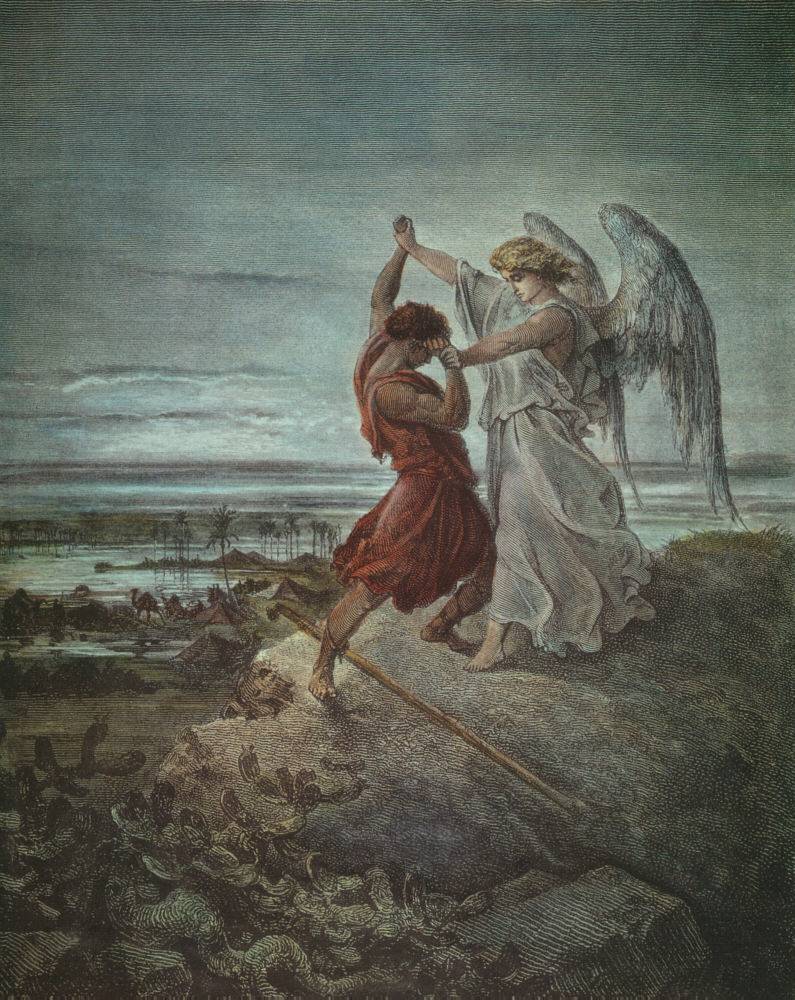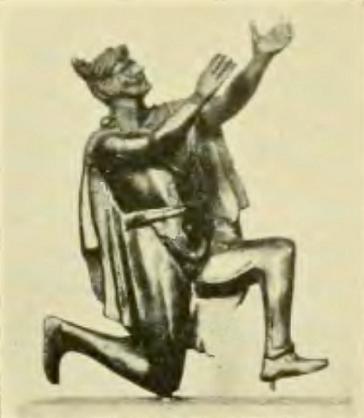|
Sealtiel
Saint Selaphiel the Archangel or Saint Sealtiel, Selatiel, or Selathiel ( Hebrew: שְׁאַלְתִּיאֵל ''Šəʾaltīʾēl,'' Tiberian: ''Šăʾaltīʾēl'', ''"''I have asked God") is one of the archangels in Eastern Orthodox traditions. Biblical References Selaphiel appears in verse 31:6 of the 6th century apocryphal Christian text '' The Conflict of Adam and Eve'', which describes how God sends him and Suriyel to help rescue Adam and Eve from Satan’s deception, commanding Selaphiel “to bring them down from the top of the high mountain and to take them to the Cave of Treasures.” Some Christian traditions consider Selaphiel as the angel in in the New Testament, who presents the prayers of people on Earth to God in heaven: "Another angel, who had a golden censer, came and stood at the altar. He was given much incense to offer, with the prayers of all God’s people, on the golden altar in front of the throne. The smoke of the incense, together with the prayers of ... [...More Info...] [...Related Items...] OR: [Wikipedia] [Google] [Baidu] |
Archangels In Christianity
Archangels () are the second lowest rank of angel in the Catholic hierarchy of angels, based on and put forward by Pseudo-Dionysius the Areopagite in the 5th or 6th century in his book ''De Coelesti Hierarchia'' (''On the Celestial Hierarchy''). The Bible itself uses the term “archangel” two times referring to the angel Michael only in the New Testament. The Bible does not mention a particular hierarchy of angels in any detail aside from this. The word is usually associated with the Abrahamic religions and many offshoots they are historically associated with. ''Archangel'' is derived from Greek (), with the Greek prefix meaning 'chief'. In Catholic theology, archangels constitute the second-lowest rank of angel; much of modernized imaging of Archangels as we have today likely stems from the etymology of their name, as well as their presentation in John Milton's ''Paradise Lost''. In many offshoots of Judaism, with the oldest text coming from Enoch 1, the highest ranking ... [...More Info...] [...Related Items...] OR: [Wikipedia] [Google] [Baidu] |
List Of Angels In Theology
This is a list of angels in religion, theology, astrology and magic, including both specific angels (e.g., Gabriel) and types of angels (e.g., seraphim A seraph ( ; pl.: ) is a Angelic being, celestial or heavenly being originating in Ancient Judaism. The term plays a role in subsequent Judaism, Islam and Christianity. Tradition places seraphim in the highest rank in Christian angelology and ...). List Groups Individual angels See also Notes References {{Angels in Abrahamic religions * Angels ... [...More Info...] [...Related Items...] OR: [Wikipedia] [Google] [Baidu] |
Archangel
Archangels () are the second lowest rank of angel in the Catholic hierarchy of angels, based on and put forward by Pseudo-Dionysius the Areopagite in the 5th or 6th century in his book ''De Coelesti Hierarchia'' (''On the Celestial Hierarchy''). The Bible itself uses the term “archangel” two times referring to the angel Michael only in the New Testament. The Bible does not mention a particular hierarchy of angels in any detail aside from this. The word is usually associated with the Abrahamic religions and many offshoots they are historically associated with. ''Archangel'' is derived from Ancient Greek, Greek (), with the Greek prefix meaning 'chief'. In Catholic theology, archangels constitute the second-lowest rank of angel; much of modernized imaging of Archangels as we have today likely stems from the etymology of their name, as well as their presentation in John Milton's ''Paradise Lost''. In many offshoots of Judaism, with the oldest text coming from Enoch 1, the ... [...More Info...] [...Related Items...] OR: [Wikipedia] [Google] [Baidu] |
Saint
In Christianity, Christian belief, a saint is a person who is recognized as having an exceptional degree of sanctification in Christianity, holiness, imitation of God, likeness, or closeness to God in Christianity, God. However, the use of the term ''saint'' depends on the context and Christian denomination, denomination. In Anglican Communion, Anglican, Oriental Orthodox, and Lutheranism, Lutheran doctrine, all of their faithful deceased in Heaven are considered to be saints, but a selected few are considered worthy of greater honor or emulation. Official Ecclesiastical polity, ecclesiastical recognition, and veneration, is conferred on some denominational saints through the process of canonization in the Catholic Church or glorification in the Eastern Orthodox Church after their approval. In many Protestant denominations, and following from Pauline usage, ''saint'' refers broadly to any holy Christian, without special recognition or selection. While the English word ''saint'' ... [...More Info...] [...Related Items...] OR: [Wikipedia] [Google] [Baidu] |
Adam And Eve
Adam and Eve, according to the creation myth of the Abrahamic religions, were the first man and woman. They are central to the belief that humanity is in essence a single family, with everyone descended from a single pair of original ancestors. They also provide the basis for the doctrines of the fall of man and original sin, which are important beliefs in Christianity, although not held in Judaism or Islam. In the Book of Genesis of the Hebrew Bible, chapters one through five, there are two Genesis creation narrative, creation narratives with two distinct perspectives. In the first, Adam and Eve are not named. Instead, God in Christianity, God created humankind in image of God, God's image and instructed them to multiply and to be Stewardship (theology), stewards over everything else that God had made. In the second narrative, God fashions Adam from dust and places him in the Garden of Eden. Adam is told that he can eat freely of all the trees in the garden, Taboo#In religion a ... [...More Info...] [...Related Items...] OR: [Wikipedia] [Google] [Baidu] |
Prayer
File:Prayers-collage.png, 300px, alt=Collage of various religionists praying – Clickable Image, Collage of various religionists praying ''(Clickable image – use cursor to identify.)'' rect 0 0 1000 1000 Shinto festivalgoer praying in front of the Tagata fertility shrine rect 1000 0 2000 1000 Balinese Hindu bride praying during a traditional wedding ceremony rect 2000 0 3000 1000 Muslim pilgrim praying at the Masjid al-Haram rect 0 1000 1000 2000 Catholic Trappist monk praying before a crucifix rect 1000 1000 2000 2000 Ethiopian priest praying in Lalibela rect 2000 1000 3000 2000 Buddhists praying in Leh rect 0 2000 1000 3000 Sikh praying in Front of the Golden Temple in Amritsar rect 1000 2000 2000 3000 Members of the Mengjia Longshan Temple Association gather for a traditional Chinese prayer service rect 2000 2000 3000 3000 Jewish people praying at the Western Wall Prayer is an invocation or act that seeks to activate a rapport with an object of worship through d ... [...More Info...] [...Related Items...] OR: [Wikipedia] [Google] [Baidu] |
Icon
An icon () is a religious work of art, most commonly a painting, in the cultures of the Eastern Orthodox, Oriental Orthodox, Catholic Church, Catholic, and Lutheranism, Lutheran churches. The most common subjects include Jesus, Mary, mother of Jesus, Mary, saints, and angels. Although especially associated with portrait-style images concentrating on one or two main figures, the term also covers most of the religious images in a variety of artistic media produced by Eastern Christianity, including narrative scenes, usually from the Bible or the lives of saints. Icons are most commonly painted on wood panels with egg tempera, but they may also be cast in metal or carved in stone or embroidered on cloth or done in mosaic or fresco work or printed on paper or metal, etc. Comparable images from Western Christianity may be classified as "icons", although "iconic" may also be used to describe the static style of a devotional image. In the Greek language, the term for icon painting uses ... [...More Info...] [...Related Items...] OR: [Wikipedia] [Google] [Baidu] |
New Testament
The New Testament (NT) is the second division of the Christian biblical canon. It discusses the teachings and person of Jesus in Christianity, Jesus, as well as events relating to Christianity in the 1st century, first-century Christianity. The New Testament's background, the first division of the Christian Bible, is called the Old Testament, which is based primarily upon the Hebrew Bible; together they are regarded as Sacred Scripture by Christians. The New Testament is a collection of 27 Christianity, Christian texts written in Koine Greek by various authors, forming the second major division of the Christian Bible. It includes four Gospel, gospels, the Acts of the Apostles, epistles attributed to Paul the Apostle, Paul and other authors, and the Book of Revelation. The Development of the New Testament canon, New Testament canon developed gradually over the first few centuries of Christianity through a complex process of debate, rejection of Heresy, heretical texts, and ... [...More Info...] [...Related Items...] OR: [Wikipedia] [Google] [Baidu] |
Satan
Satan, also known as the Devil, is a devilish entity in Abrahamic religions who seduces humans into sin (or falsehood). In Judaism, Satan is seen as an agent subservient to God, typically regarded as a metaphor for the '' yetzer hara'', or 'evil inclination'. In Christianity and Islam, he is usually seen as a fallen angel or jinn who has rebelled against God, who nevertheless allows him temporary power over the fallen world and a host of demons. In the Quran, Iblis (Shaitan), the leader of the devils (''shayāṭīn''), is made of fire and was cast out of Heaven because he refused to bow before the newly created Adam. He incites humans to sin by infecting their minds with ''waswās'' ('evil suggestions'). A figure known as ''ha-satan'' ("the satan") first appears in the Hebrew Bible as a heavenly prosecutor, subordinate to Yahweh (God); he prosecutes the nation of Judah in the heavenly court and tests the loyalty of Yahweh's followers. During the intertestamental period, ... [...More Info...] [...Related Items...] OR: [Wikipedia] [Google] [Baidu] |
Sariel
Sariel (Hebrew and Aramaic: שָׂרִיאֵל ''Śārīʾēl'', "God is my Ruler"; Greek: Σαριηλ ''Sariēl'', ''Souriēl''; Amharic: ሰራቁያል ''Säraquyael'', ሰረቃኤል ''Säräqael'') is an angel mainly from Judaic tradition. Other possible versions of his name are Suriel, Suriyel (in some Dead Sea Scrolls translations), Seriel, Sauriel, Saraqael, Sarakiel, Suruel, Surufel, and Souriel. In 1 Enoch (20:6), he is said to be "one of the evenholy angels ho watch who is set over the spirits, who sin in the spirit". Origen identified Suriel as one of seven angels who are considered primordial powers by the Ophites. In Gnosticism, Sariel is invoked for his protective powers. He is commemorated by the Coptic Orthodox Church on 27 Tobi in the Coptic calendar. He is not to be confused with the fallen watcher Sahariel (Hebrew & Aramaic: שַׂהֲרִיאֵל ''Śahărīʾēl''; "God is my moon") who bears a similar name. In 1 Enoch (8:1) he is said to ha ... [...More Info...] [...Related Items...] OR: [Wikipedia] [Google] [Baidu] |
Eastern Orthodox Church
The Eastern Orthodox Church, officially the Orthodox Catholic Church, and also called the Greek Orthodox Church or simply the Orthodox Church, is List of Christian denominations by number of members, one of the three major doctrinal and jurisdictional groups of Christianity, with approximately 230 million baptised members. It operates as a Communion (Christian), communion of autocephalous churches, each governed by its Bishop (Orthodox Church), bishops via local Holy Synod, synods. The church has no central doctrinal or governmental authority analogous to the pope of the Catholic Church. Nevertheless, the Ecumenical Patriarch of Constantinople is recognised by them as ''primus inter pares'' (), a title held by the patriarch of Rome prior to 1054. As one of the oldest surviving religious institutions in the world, the Eastern Orthodox Church has played an especially prominent role in the history and culture of Eastern Europe, Eastern and Southeastern Europe. Since 2018, the ... [...More Info...] [...Related Items...] OR: [Wikipedia] [Google] [Baidu] |








